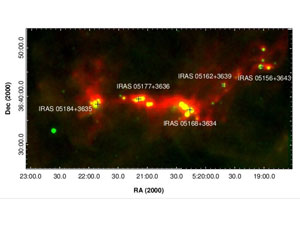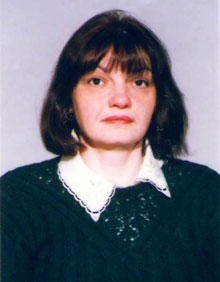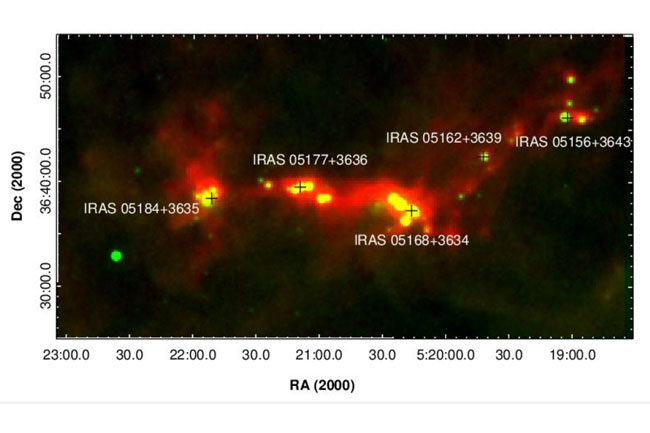| ||||||||
"In astrophysics, the study of the problems related to the process of star formation is of great importance. In our work "The structure of IRAS05168+3634 star-forming region" we have shown that stars of different substructures are in different evolutionary stages, and there is a well-defined correlation between the evolutionary age of the stars and the properties of the gas-dust matter surrounding them. In the work, certain regularities between the stellar population and the gas-dust environment of their parent cloud have been clarified for the given star-forming region," said Elena Nikoghosyan, a leading researcher of the Byurakan Astrophysical Observatory after Victor Ambartsumian of the National Academy of Sciences of the Republic of Armenia, candidate of physical- and- mathematical sciences. She stated that the performed analysis has shown that the subregions with the greatest density and mass of interstellar matter contain the highest percentage of young stellar objects with the evolutionary stage of Class I. "The wide distribution of the evolutionary age of stars in all subregions (from 105 to 107 years) proves that the process of star formation in the observed star-forming region is of spontaneous and sequential condensations nature. In the subregions where the mass of the initial, parent molecular cloud is larger, this process is probably more active and has a longer duration", said Elena Nikoghosyan.
The research was carried out within the framework of the "Young Scientists' Support Project" on 21AG-1C044 scientific theme "Star-Forming Regions: Formation and Evolution". An article on the scientific result was published in the international journal of astronomy, astrophysics and space science "Astrophysics and Space Science". The results of the work were reported at Chalmers University of Technology in Sweden at the international conference "From Stars to Galaxies II" held on June 20-24, 2022. Three of the four co-authors of the scientific work are young researchers. |
General Page - About Academy - Divisions - Organizations - Members - Contact us - Structure - Presidium Members
Documents - Innovation Proposals - Publications - Funds - Conferences - Competitions - International cooperation
Youth programs - Photogallery - Videogallery - Web Resources Other Academies - "Gitutyun" newspaper - "In the World of Science" Journal
Publications in Press - Notices - Anniversaries - Universities - News - Scientific Results - Scientists of the Diaspora
Young Scientist Tribune - Our Honored Figures - Announcements - Sitemap - Search

 The researchers of the NAS RA Byurakan Astrophysical Observatory after Victor Ambartsumian have shown that stars of different substructures are in different evolutionary stages and have confirmed a well-defined correlation between the evolutionary age of the stars and the properties of the gas-dust matter surrounding them.
The researchers of the NAS RA Byurakan Astrophysical Observatory after Victor Ambartsumian have shown that stars of different substructures are in different evolutionary stages and have confirmed a well-defined correlation between the evolutionary age of the stars and the properties of the gas-dust matter surrounding them. Image of IRAS 05168+3634 star-forming region
Image of IRAS 05168+3634 star-forming region